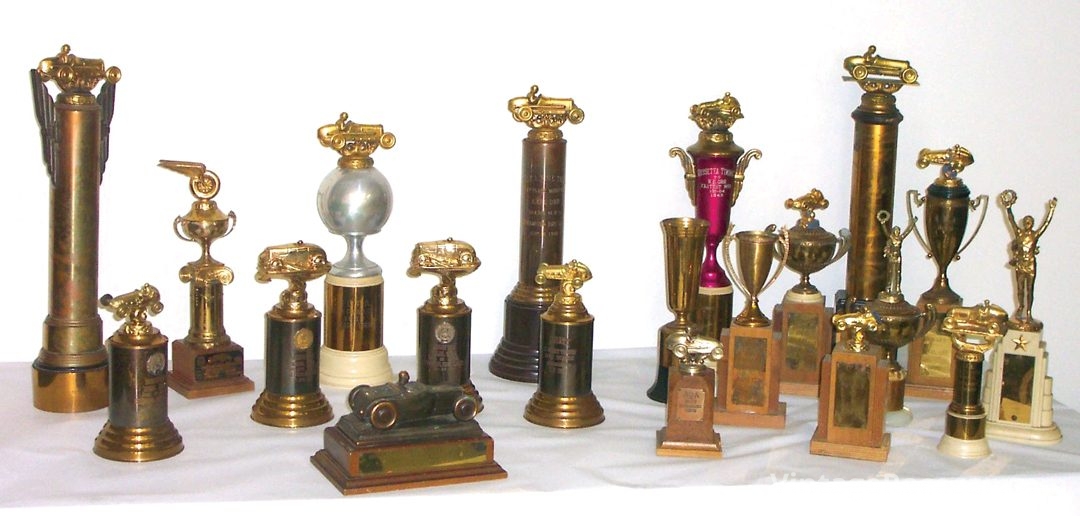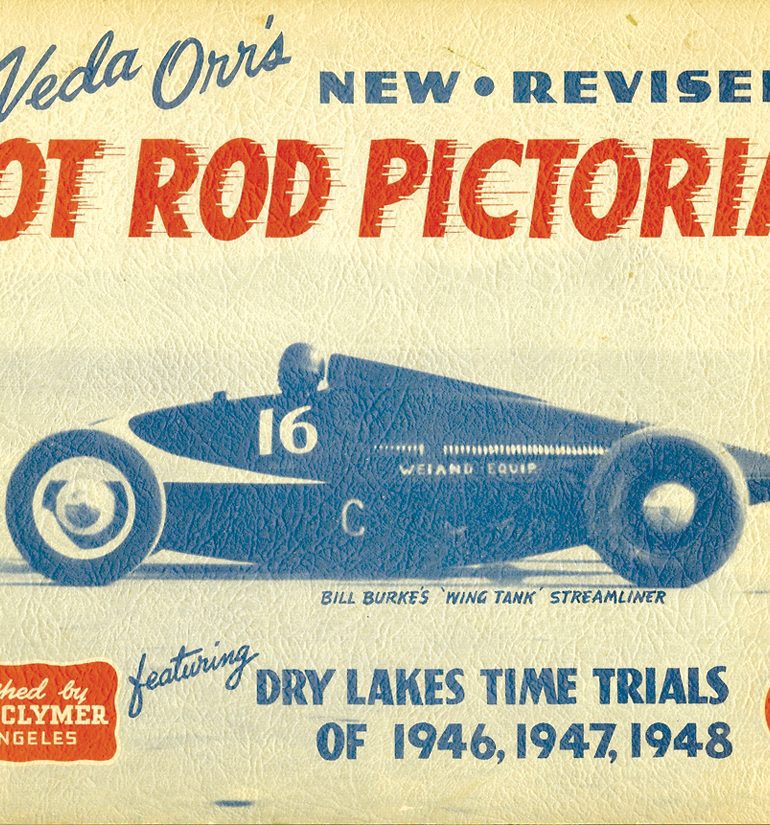Veda and Karl Orr are legendary Hot Rodders. They were among the early racers who took to the dry lakes of Southern California in the 1930s, putting the go-pedal down as hard as they could. Although the Southern California Timing Association (SCTA) was formed in 1937, it was not until 1949 that it held its first speed trial at the Bonneville Salt Flats. Before that, men (and one woman) with a need for speed raced across the dry lake beds of El Mirage, Muroc, Harper, Rosamond, Evans and Dale. Even though it was dusty out there, it made sense. The dry lakes were flat and smooth and without animals or vegetables or minerals to run into.
Karl Orr was the first of the dry-lakers to make a four-banger go 125 mph, and he was also the first to exceed 120 mph in a ’32 Ford Roadster. In 1941 he blazed to 133 mph in a modified Roadster. It was awesome performances like this that led to him becoming SCTA’s Season Champion in 1942.
Veda was the first, and for decades the only, woman member of the SCTA. She was clocked on the dry lakes at 104 mph in a stock-bodied Model A Roadster in 1939, and captured the Stock Car class record. In 1941 she pushed a modified Roadster to 131 mph, her best-ever dry lakes run. She published a newsletter during WW II and mailed copies to approximately 750 SCTA members who were serving our country. Many hot rod historians believe that this publication was the glue that held the SCTA together and was perhaps the inspiration behind Hot Rod Magazine. She also produced the popular Veda Orr’s Hot Rod Pictorial.
From a historian’s standpoint, the dry lakes days are both fascinating and frustrating. They are fascinating because in these racers one can find the DNA for virtually all forms of racing that followed; frustrating because historical documentation is scant. Two useful tools we have to document dry lakes racing history are trophies and timing tags, and none would be more coveted than the collection of those of Veda and Karl Orr. But you guessed it…many of them have been missing for a long, long time. As noted dry lakes authority Albert Drake wrote in his book, The Age of Hot Rods, “Karl and Veda Orr won many trophies competing at the So-Cal dry lakes during the Thirties and Forties, but most of them were broken when they fell from shelves during an earthquake. They (the Orrs) told me that one well known rodder/writer desperately wanted even the broken trophies. I know that he didn’t get them, but I hope someone got them after the Orrs passed away, someone who knows that the trophies should be saved.”
For some time, a man whom I’ll call Donald had been using Google Earth satellite images to monitor several storage containers sitting in desolate areas scattered throughout Southern California. The contents of the storage containers belonged to Bob Sorrell, a master fabricator of the ’50s and a peculiar character in his own right. As the legend goes, Sorrell was a collector of many things automotive, and never threw anything away. From the 1970s to mid 1990s Sorrell squirreled away his life’s collection in a total of nine storage containers in heavy equipment yards throughout Southern California. And then he passed away.

That’s where Chris Wickersham enters the story. Wickersham is a well known restorer/collector with vast knowledge of road racing cars and hot rods. A racing buddy had heard that Donald had a Kurtis chassis for sale and asked Wickersham to check it out for him.
According to Wickersham, “As I walked up to Donald’s house, there, neatly laid out in his carport were the contents of three of Sorrell’s containers. There was the chassis and a set of original seat covers from one of Reventlow’s Scarabs, and original Motorama participant posters and rare Ferrari parts and pieces of a Lister frame and lots, lots more. Also displayed were four trophies. I looked at them and realized that they were early dry lakes trophies and I got excited. Then Donald told me there were sixteen more in storage.” Wickersham authenticated the Kurtis chassis, paid Donald, loaded it into his truck and drove off…trophy-less.
Four months and many conversations later Donald decided that Wickersham should be the next custodian of the trophies. Donald had been a good friend of Sorrell’s and knew that he had kept them together for a reason. Donald also believed that Sorrell would have wanted them to remain at home in Southern California. So Wickersham was invited back. As he followed Donald inside his house he couldn’t believe his eyes; twenty Orr racing trophies set out in a beautiful display on a linen-covered dining room table. Among the trophies: Karl’s “SCTA High Point Car 1942;” and Veda’s “5th Place Roadster 7-7-46 at 122.78 mph;” and Karl’s “1st Modified at Harper 6-14-42 at 134.12 mph.” Donald indicated that he wanted Wickersham to have the entire lot. They agreed on a price and Wickersham is elated; “A find like this is a once in a lifetime deal. I had to have them.”
While the mystery of how Sorrell wound up with the Orr Trophies remains unsolved, you can relax Mr. Drake. The missing Orr Trophies have found a good safe home with Wickersham, thanks to Sorrell’s foresight to save them all those years, and Donald’s insistence on placing them in just the right home.




